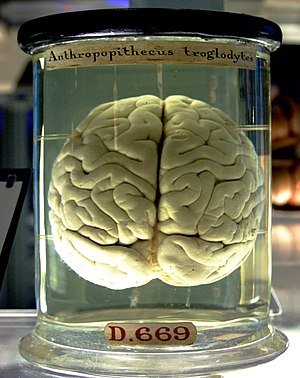 Image via WikipediaBy Patrick Haggard and Matthew R. Longo
Image via WikipediaBy Patrick Haggard and Matthew R. LongoAll our experience of the world, and ability to act on it, are channelled through our body. The pioneering computer scientist, Alan Turing, correctly realised the human mind is special not particularly because of its computing power, but because the body provides it with a unique interface to the world. Current research in psychology and neuroscience is probing how the brain represents the body. Recent advances have revealed that body representation is fundamentally multisensory, arising from the combination of many different sensory signals. These include classical “senses,” such as touch and vision, and also much more specific signals, such as the flexion or extension of each muscle, which define the body’s posture in space. This information is integrated to construct a multisensory representation of the current state of the body. Intriguingly, multisensory signals also affect what we perceive our body to be like, for example by making us feel like a rubber hand really is our hand! Our thoughts about what our body is are highly flexible, and track the multisensory inputs that the brain receives.
A common illustration of just how flexible the sense of our body is comes from changes in the brain’s representation of the body due to tool use. Humans, and some other animals, are able to use tools as additions to the body. When we use a long pole to retrieve an object we couldn’t otherwise reach, the pole becomes, in some sense, an extension of our body. Is this merely a poetic way of speaking, or does the brain actually incorporate the tool into its representation of the body? Studies of monkeys learning to use a rake to obtain distant objects show that this may be more than a mere metaphor. Multisensory brain cells respond both to touch on the hand or visual objects appearing near the hand. When the monkeys used the rake, these cells began to respond to objects appearing anywhere along the length of the tool, suggesting the brain represented the rake as actually being part of the hand.
Read Full Article

No comments:
Post a Comment